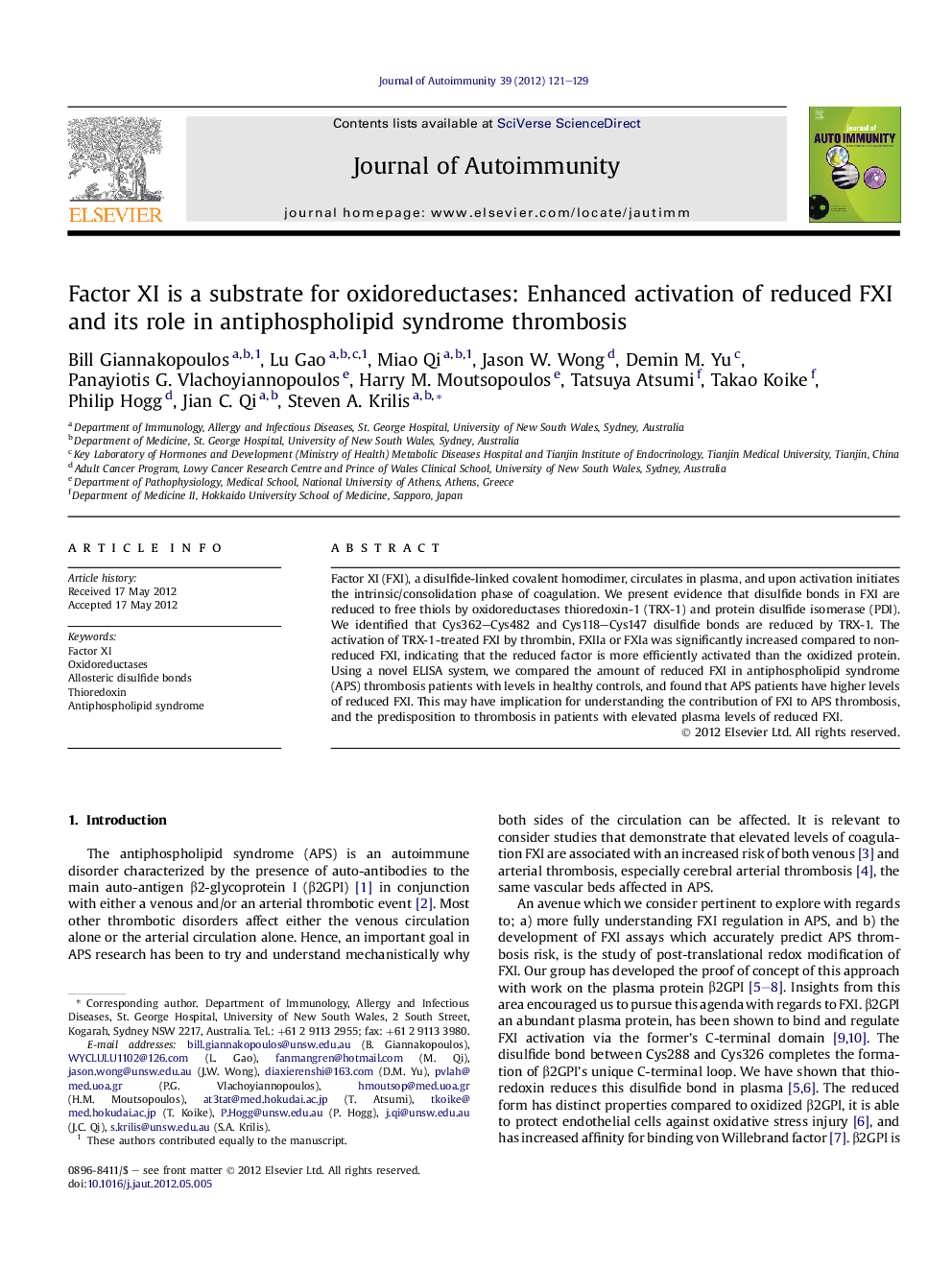| Article ID | Journal | Published Year | Pages | File Type |
|---|---|---|---|---|
| 3367919 | Journal of Autoimmunity | 2012 | 9 Pages |
Factor XI (FXI), a disulfide-linked covalent homodimer, circulates in plasma, and upon activation initiates the intrinsic/consolidation phase of coagulation. We present evidence that disulfide bonds in FXI are reduced to free thiols by oxidoreductases thioredoxin-1 (TRX-1) and protein disulfide isomerase (PDI). We identified that Cys362–Cys482 and Cys118–Cys147 disulfide bonds are reduced by TRX-1. The activation of TRX-1-treated FXI by thrombin, FXIIa or FXIa was significantly increased compared to non-reduced FXI, indicating that the reduced factor is more efficiently activated than the oxidized protein. Using a novel ELISA system, we compared the amount of reduced FXI in antiphospholipid syndrome (APS) thrombosis patients with levels in healthy controls, and found that APS patients have higher levels of reduced FXI. This may have implication for understanding the contribution of FXI to APS thrombosis, and the predisposition to thrombosis in patients with elevated plasma levels of reduced FXI.
► Factor XI can be reduced by oxidorectases such as thioredoxin. ► Thioredoxin potentiates thrombin activation of FXI to its active form FXIa. ► Reduced FXI circulates in human plasma and is significantly elevated in patients with APS. ► These data suggest a mechanism for the venous and arterial thrombosis seen in patients with APS.
